Bhutan's diagrid airport
BIG's design for the new Gelephu airport is a modern take on traditional Bhutanese style
Bjarke Ingels Group (BIG) recently unveiled its design for the terminal at Bhutan’s new international gateway, Gelephu International Airport.
Out was the country’s iconic and immediately recognizable architectural style featuring roofs with wide overhangs above typically earthen, stone, and timber structures. In was a cluster of interconnected, mass-timber triangles — technically a “diagrid” structure — drawn from the surrounding mountainous Himalayan landscape, and carved and decorated in traditional Bhutanese style.
My first reaction was, “cool,” and I moved on.
Then I read a recent newsletter from
, and started to rethink the design of Bhutan’s new airport.“Bhutanese architecture is one of the most distinct architectural styles and is subject to strict nationwide rules. Everything from a shepherd’s house to monasteries to the national airport is immediately recognizable in form and decoration as Bhutanese. While Ingels has included elaborate and beautiful Bhutanese decoration in his rendering, the forms are not even remotely traditional nor do they seem to have any relation to them.”
Hmm.
BIG’s design
All of the press that I read on BIG’s design, done in collaboration with Dutch aviation engineers NACO, was positive. CNN Travel described it as an attempt to embody “a concept like mindfulness.” Designboom highlighted the design’s “balance between ancient traditions and contemporary techniques.” And Dezeen talked about how the surrounding landscape was “a key reference for the design.”
Broadly, I agree. On a high level, the design stands out as unique among global airports. Rarely does one see a new mass-timber terminal on the scale of Gelephu (outside of Portland at least), not to mention one that adopts a diagrid approach to both structural and design elements. Steel and glass, the materials of choice in contemporary airports, appear nonexistent in the renderings.
Ingles described his firm’s design as “traditional yet avant-garde, forward-reaching and rooted.”
The wood beams that make up the structure of Gelephu showcase Bhutanese carpentry, carving, painting, and weaving, per BIG. Greenery, as part of a “forest spine,” will connect the landside and airside of the airport while separating domestic and international functions. There’s even a treetop walkway.
But how, as O’Connor asked, does the new terminal fit with Bhutan’s architectural heritage? Crickets.
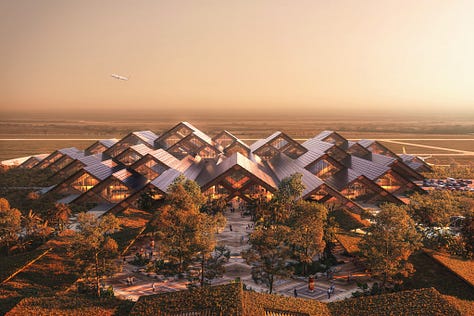
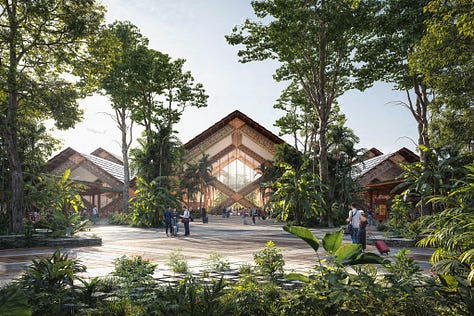
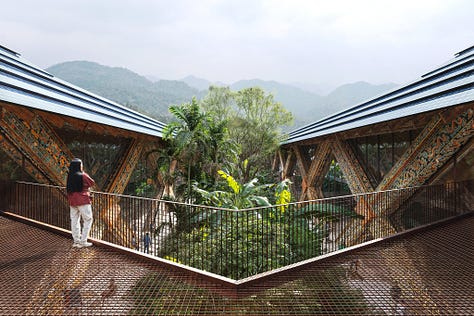
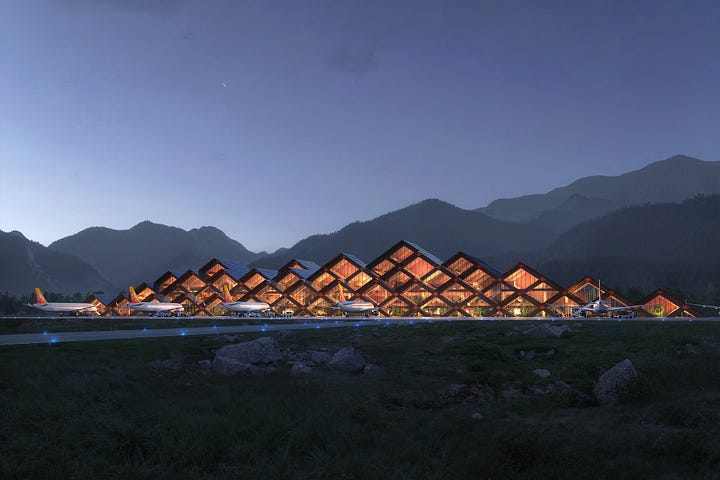
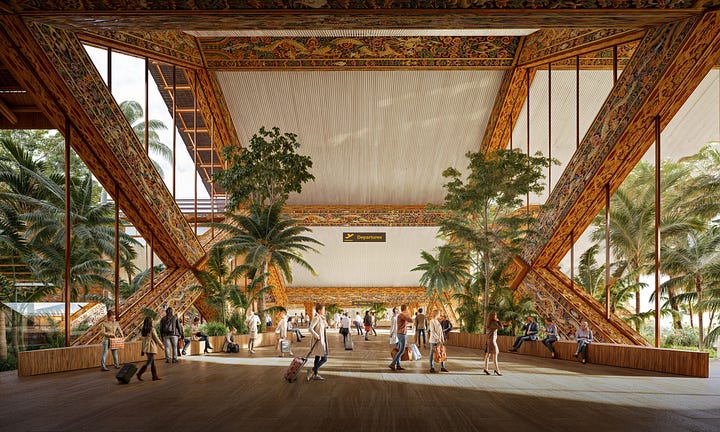
‘Castles in the air’
The monastery Paro Taktsang “is unquestionably the most picturesque group of buildings I had seen. Every natural feature in the landscape had been taken advantage of, and beautiful old trees clinging to the rocks were in just the right position and, combined with the sheer precipices, made a magnificent picture,” wrote John Claude White in his travelogue Castles in the Air published in National Geographic in 1914.
Each building, built on the cliff of a Bhutanese gorge, was “two stories high and is painted, like all monasteries, a dull light gray on the lower story, with a broad band of madder red above, and shingle roofs on the top of which are gilded canopies.”
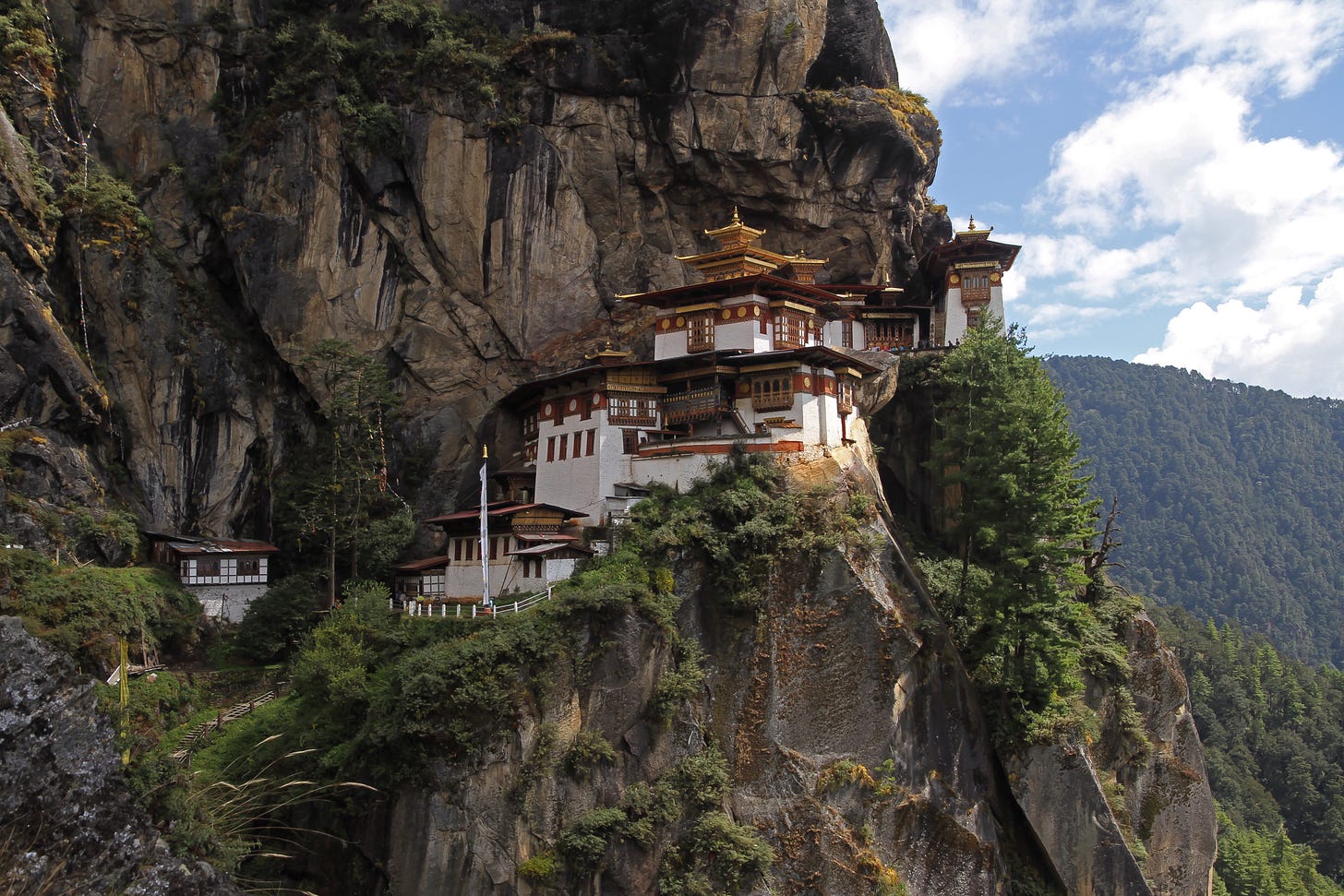
While Paro Taktsang is the quintessential image of a Himalayan monastery, the “Dzong,” or monastery fortress, is probably the most widely recognizable form of Bhutanese architecture. White visited many on his trip and, as the country’s Ministry of Works and Human Settlement put it in its 2014 Bhutanese Architectural Guidelines, they are “by far some of the most impressive and majestic forms of architecture in Bhutan.”
These rectilinear buildings feature a central tower and are built with white masonry walls, colored friezes, and the country’s signature shingled roofs with wide overhangs.
The design of Bhutan’s current international airport, Paro International Airport, mimics that of the Dzong.

“The terminal building … was designed to offer visitors the first glimpse of the unique architectural heritage of the nation,” is how Bhutan’s Department of Air Transport describes the structure on its website. “Our efforts are dedicated in keeping the airport as beautiful and as modern as it is Bhutanese without having to compromise on passenger convenience.”
Place is certainly not a question at the Paro airport, which is better known for its harrowing takeoffs and landings than its design.
Does the new airport at Gelephu need to follow in that storied architectural style? An argument can be made that it should, and also for a more contemporary approach.
Architecture is a critical piece of Bhutan’s strong cultural identity, wrote Marc Dujardin in a 2000 paper in the Journal of Bhutan Studies. That fact is echoed across much western academic discourse1 in the years before and since.
Ornamentation, as on the wood beams of Gelephu’s diagrid structure, features almost as prominently as form in that discourse.
“The most distinctive elements of architecture of traditional Bhutanese buildings lie in following elements,” according to the government’s architectural guidelines. Included on that list is “the touch of local artists in the colorful floral, iconographic and spiritual paintings that embellish the interiors and the elevations of buildings.”
And BIG’s design for the new Gelephu airport features ornamentation in spades.
“The painted facade draws inspiration from the ‘Krachen’ a wooden pillar revered for its structural significance and intricate design, embodying Bhutanese architectural heritage and spiritual symbolism,” the firm wrote in the description of its design.
The aim of the new airport is as the gateway to Gelephu, a new city unveiled by King Jigme Khesar Namgyel Wangchuck in late 2023 “designed to be a financial center offering a gateway to India, much as Singapore and Hong Kong do for China,” as The Economist put it.
And a major financial center, at the very least, needs a good airport.
In the end though, what the new Gelephu airport looks like is up to the Bhutanese people and government.
“Our immediate priority over the next five years is the construction of a large international airport in Gelephu, which will establish [Gelephu Mindfulness City] as a key aviation hub,” King Jigme said in a statement. “The airport is essential to the success of the GMC as a business hub, and it is also a critical lifeline for Bhutan’s national security, especially for a landlocked country.”
I could find limited publicly-available Bhutanese discourse on the country’s architectural heritage.

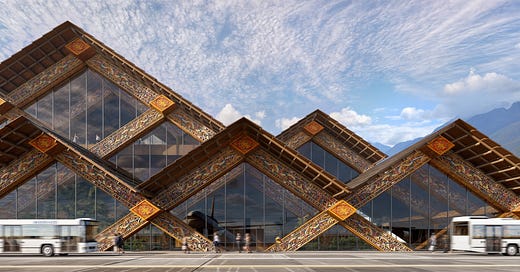



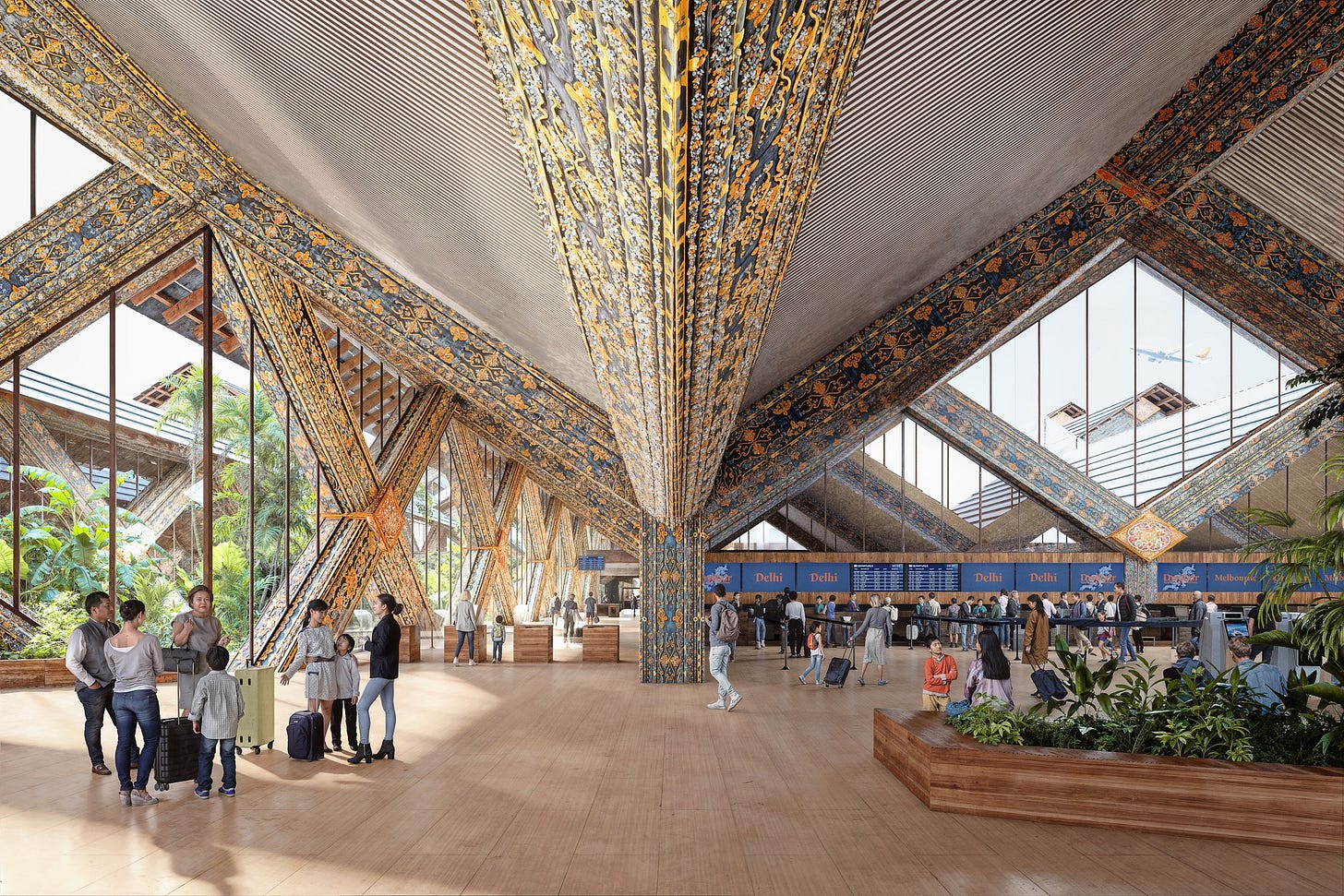
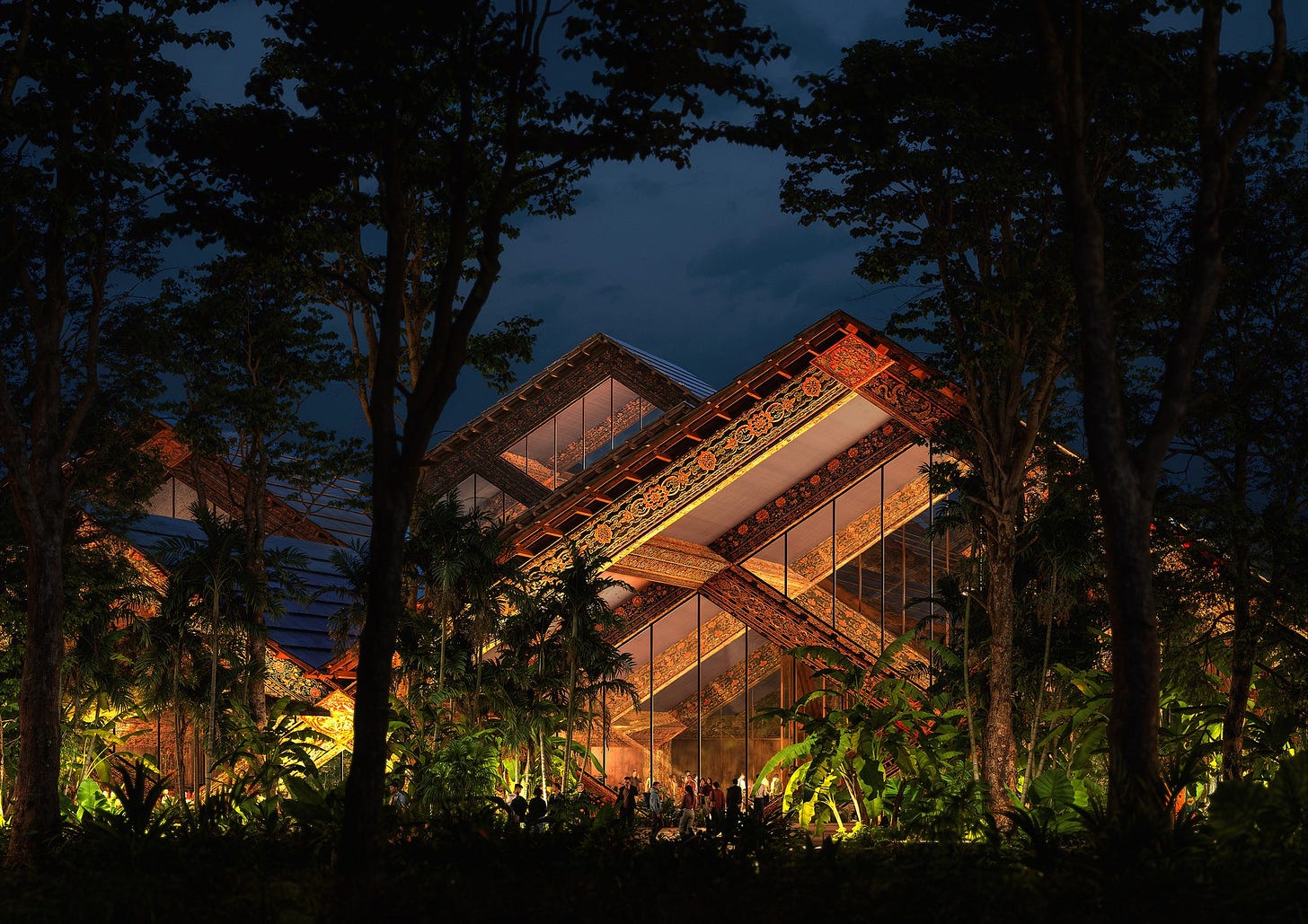
I actually went to Bhutan 🇧🇹 two years ago! Basically all buildings that you see everywhere are in traditional Bhutanese architectural style. It’s a beautiful style! But it also gets a bit monotonous eventually. Something could be a hotel, prison, office building, school, apartment building, or the airport, and it might be difficult to tell what it is without a sign. I remember thinking to myself “surely they could loosen up a bit while still holding on to the principles.”So I think this new airport’s design is lovely to see! It still feels distinctly Bhutanese while breaking up the monotony.